Beginner's guide to setting up and streaming with XSplit
XSplit is a great piece of software for streaming and other online broadcasting needs. Here's what you need to know about getting started.
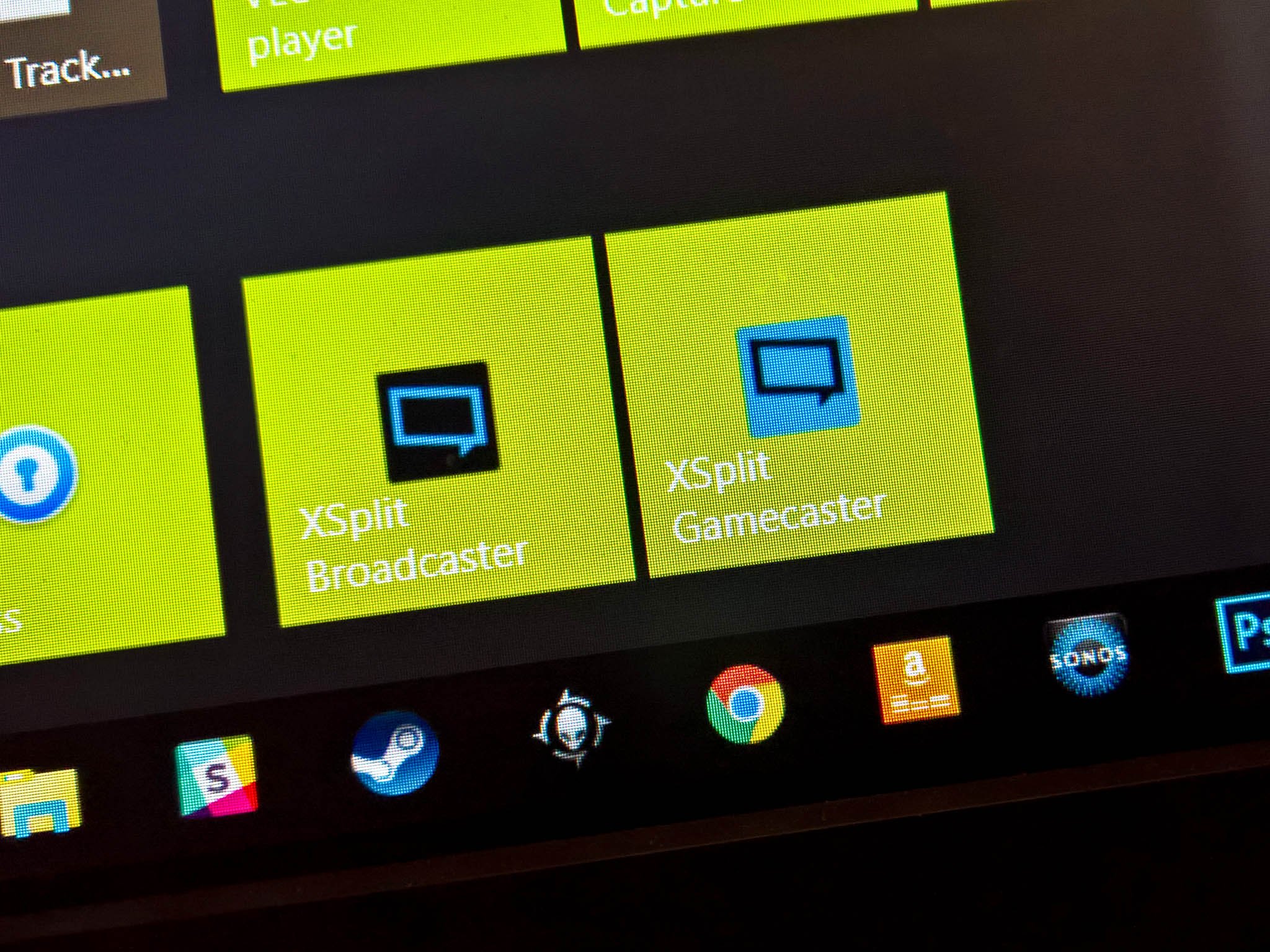
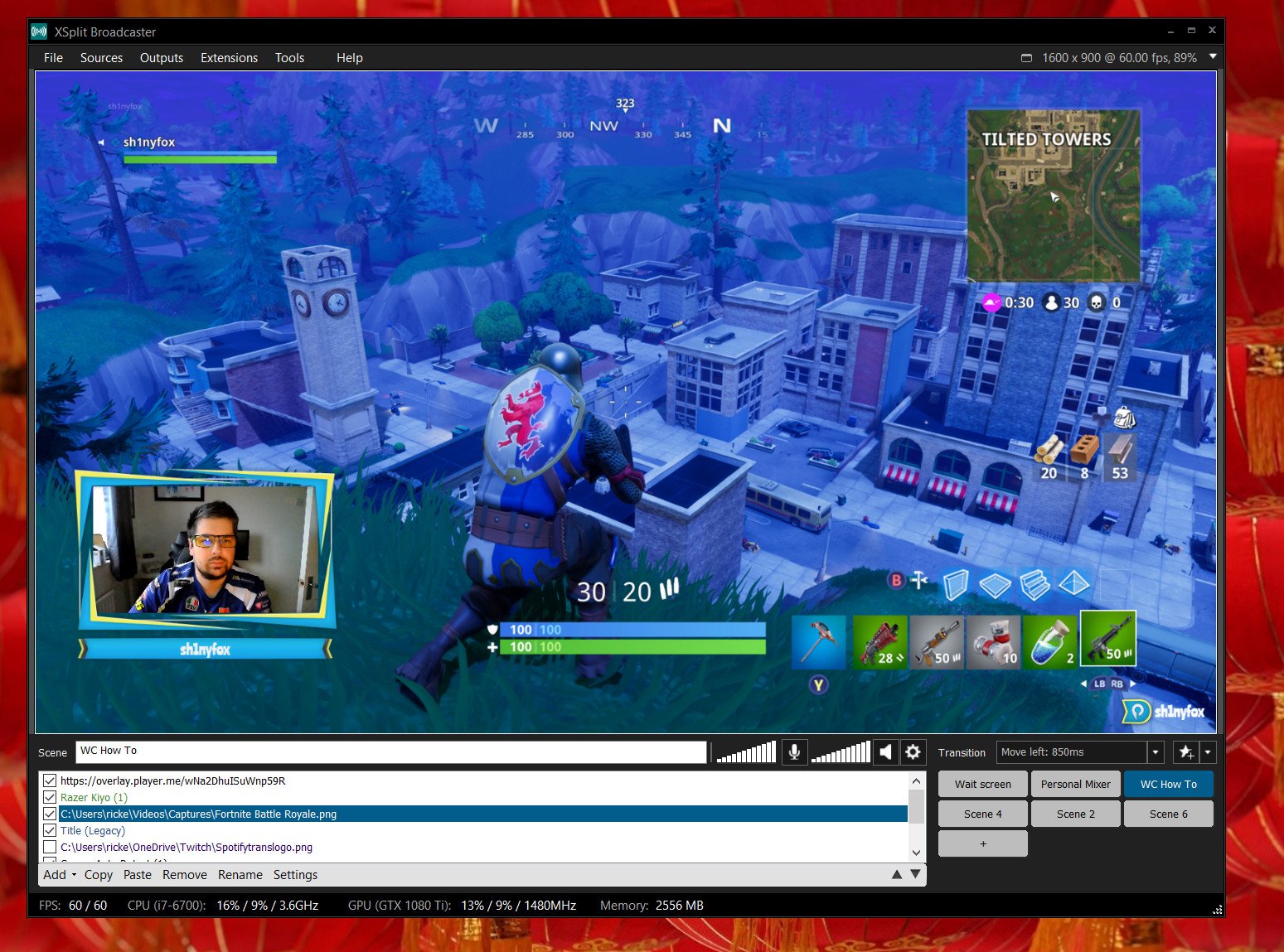
Whether you're streaming from a PC or console, to get the absolute best quality broadcast you're probably looking for some great software. In the case of Windows, one of the most popular choices is XSplit.
It isn't free, unlike the other popular choice, OBS, but for a fairly reasonable subscription, you get a really user-friendly app that's very straightforward to get to grips with.
Here, I'll show you how the basics and how to get your stream up and running using XSplit Broadcaster.
How to connect Twitch or Mixer to XSplit
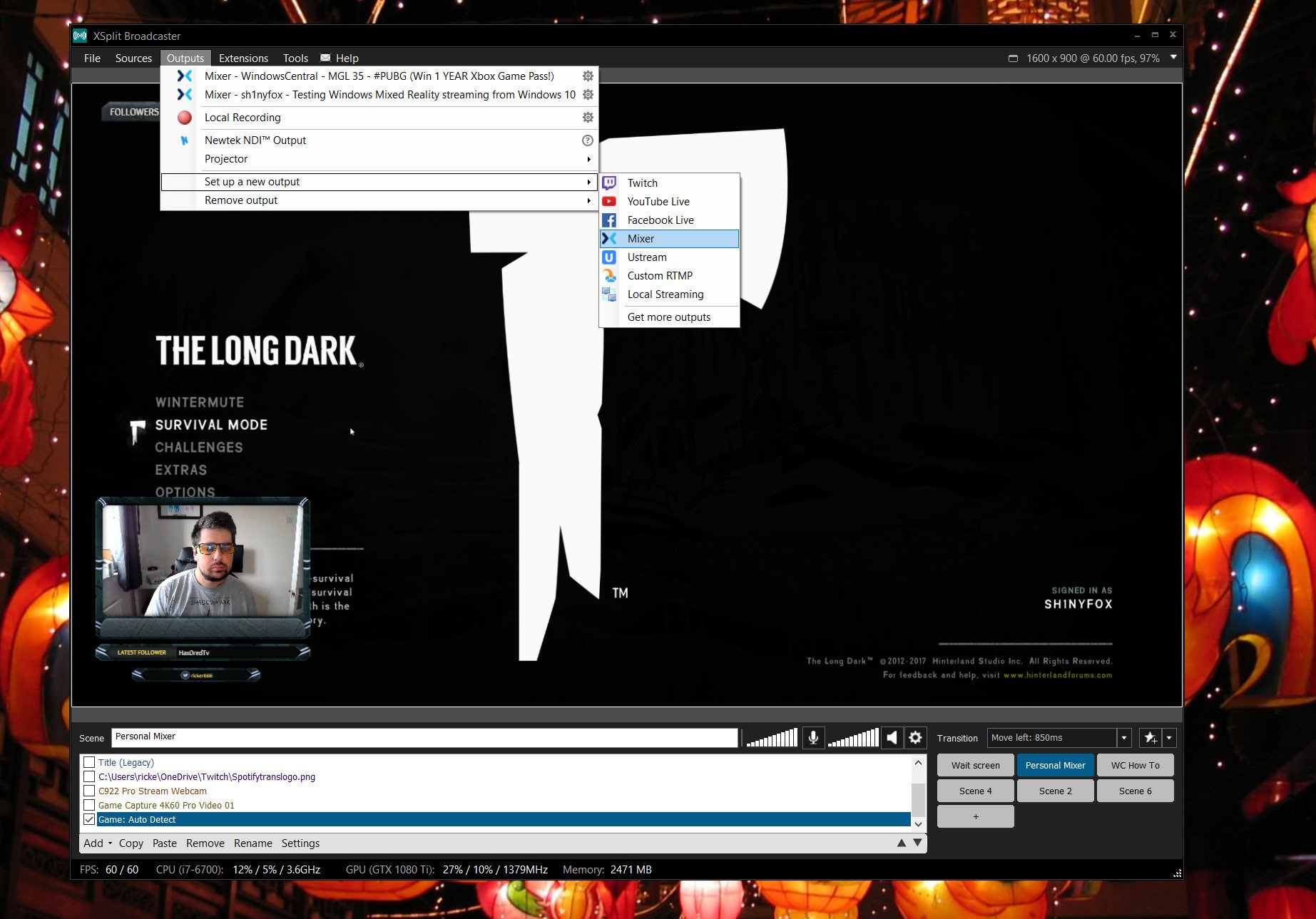
Before you stream anything anywhere you need to give XSplit the credentials to broadcast on your channel. Exactly how you do this on the wide range of services OBS supports will vary, but I'm covering Twitch and Mixer for the purposes of this guide.
In the other popular app, OBS, you have to generate a stream key which then pastes into the app. In XSplit it's much simpler and the process doesn't require anything outside of the app.
- Click on outputs in the menu bar.
- Select set up a new output.
- Choose your service.
Whether you've chosen Twitch or Mixer you'll now be asked to log in to your account to authenticate XSplit to stream to your channel.
Get the Windows Central Newsletter
All the latest news, reviews, and guides for Windows and Xbox diehards.
How to set up output resolution and bitrate in XSplit
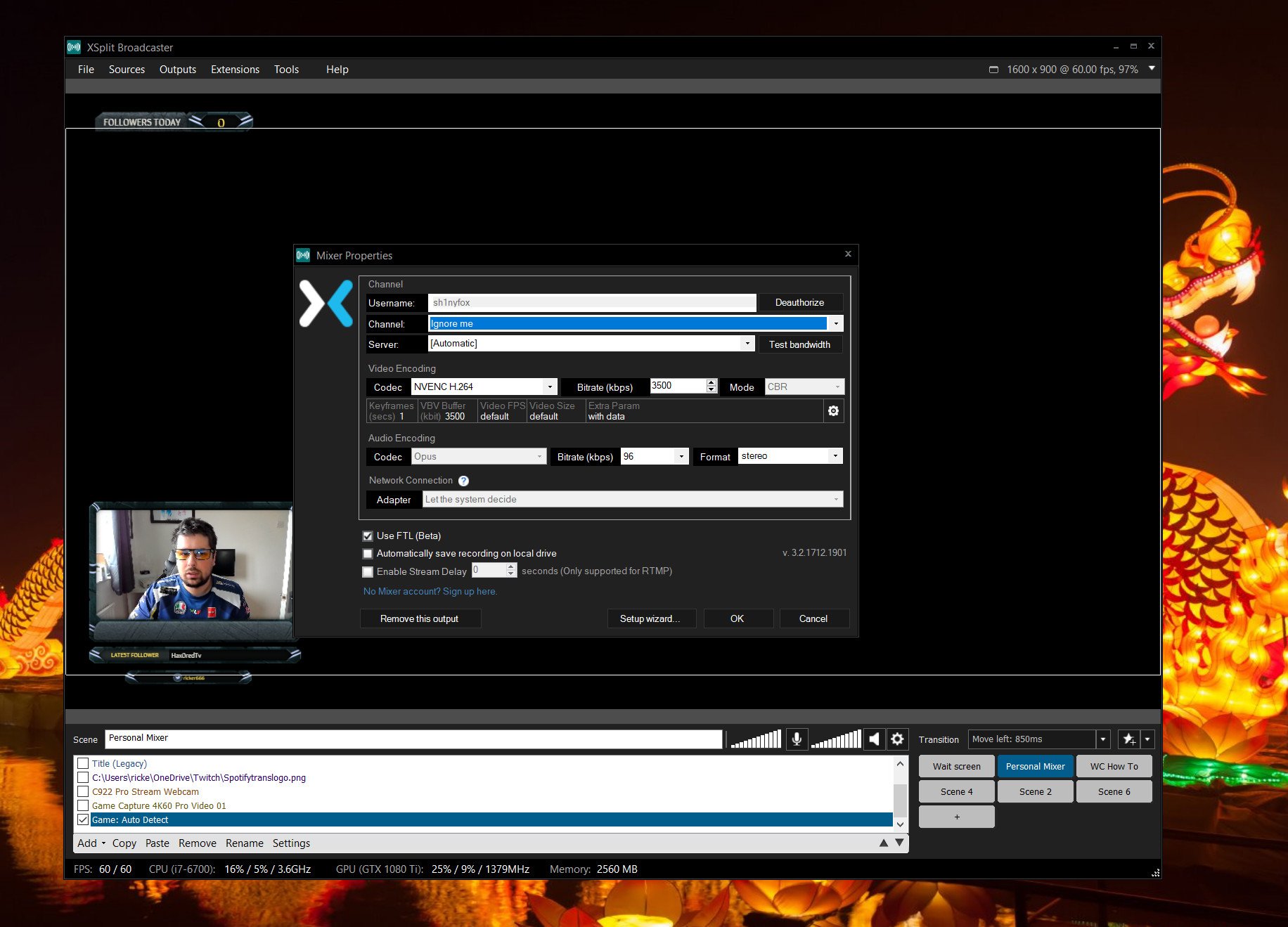
Now you're set up to actually stream, the first step is to set your resolution, frame rate, and bitrate. The higher each of these the more bandwidth and horsepower you'll need from your PC. XSplit has a built-in bandwidth checker, so I recommend running this before settling on your settings to make sure your connection can handle it.
If you've got a really fast internet connection and a powerful PC, then you can probably stream at 1080p60 at a high bitrate. But, you also need to balance this with providing a stream that's not going to buffer like mad for your viewers who might be on slower connections.
- Click on outputs in the menu bar.
- Click on the settings cog next to the streaming service you set up above.
- Change the bitrate value to whatever you want it to be.
- Click OK.
- Next, click on the drop-down box in the top right corner of the main window.
- Select resolution.
- Change the resolution to match your desired output, regardless of the resolution you play your games at.
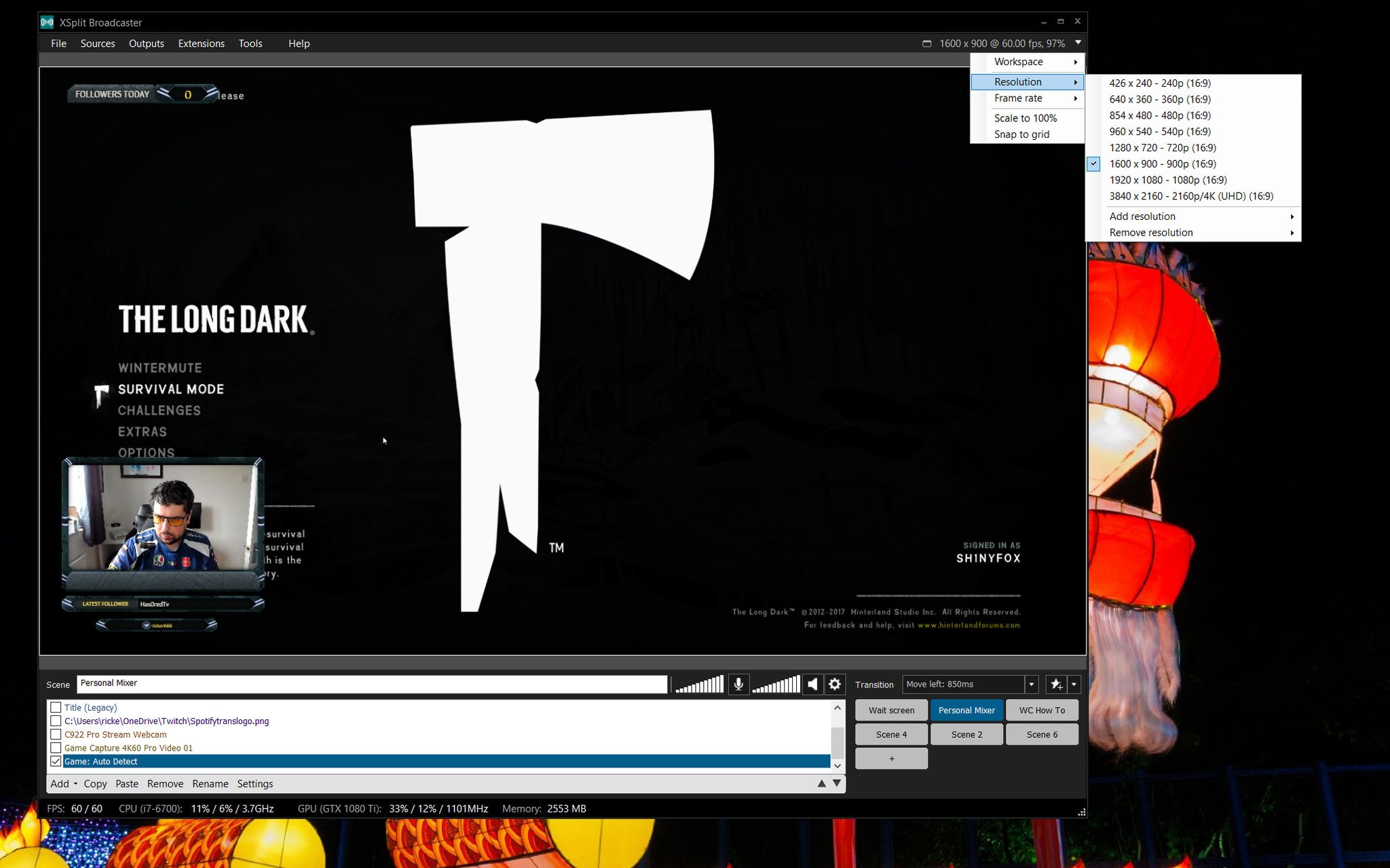
- Follow step 5 again, this time selecting frame rate.
- Change the frame rate to whatever you want it to be.
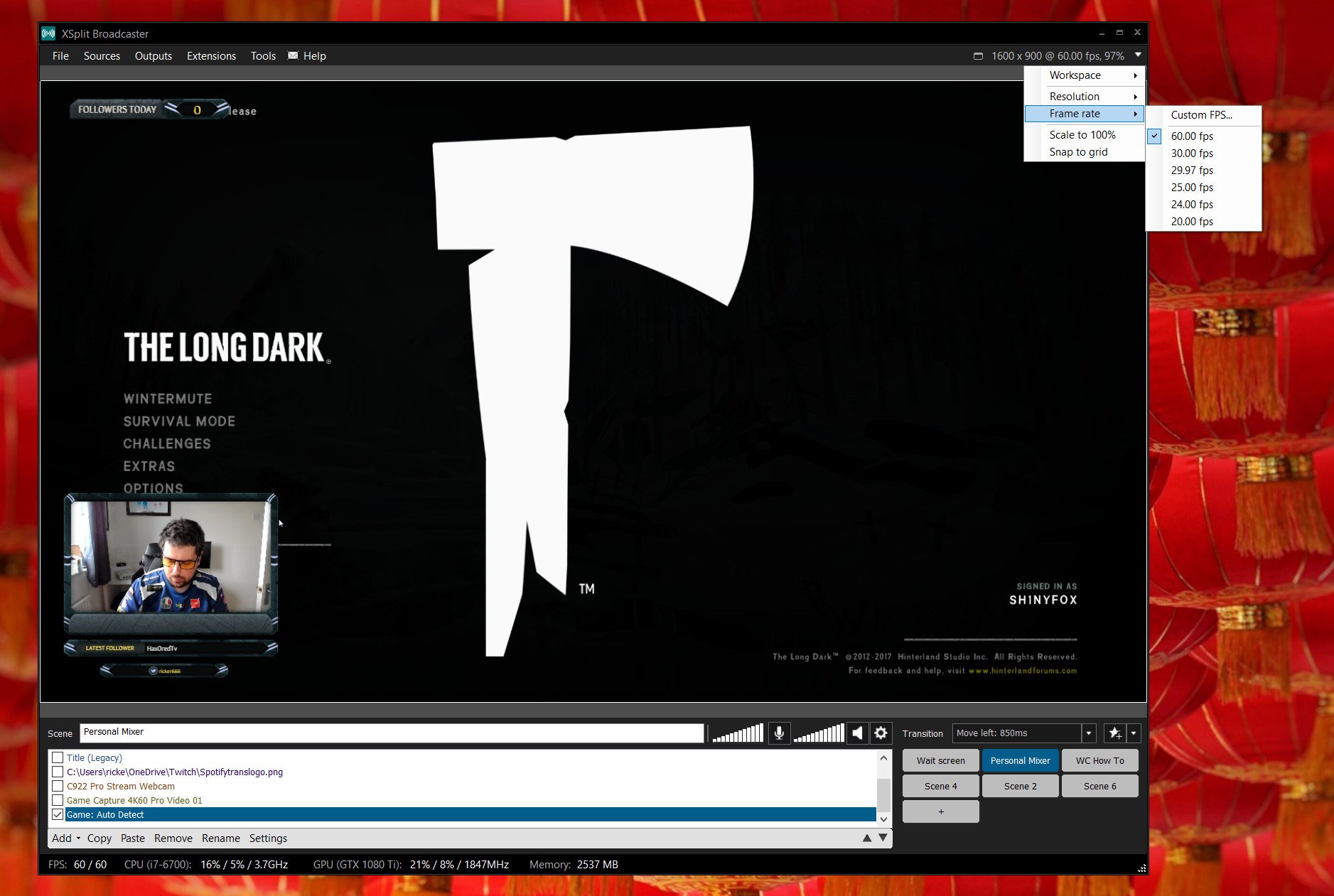
Twitch has a handy resource on the sort of bitrates you should be using depending on your output, so it's worth reading up and balancing these figures against the upload speed from your internet provider. Mixer has a similar resource for streaming there.
How to set up audio devices in XSplit
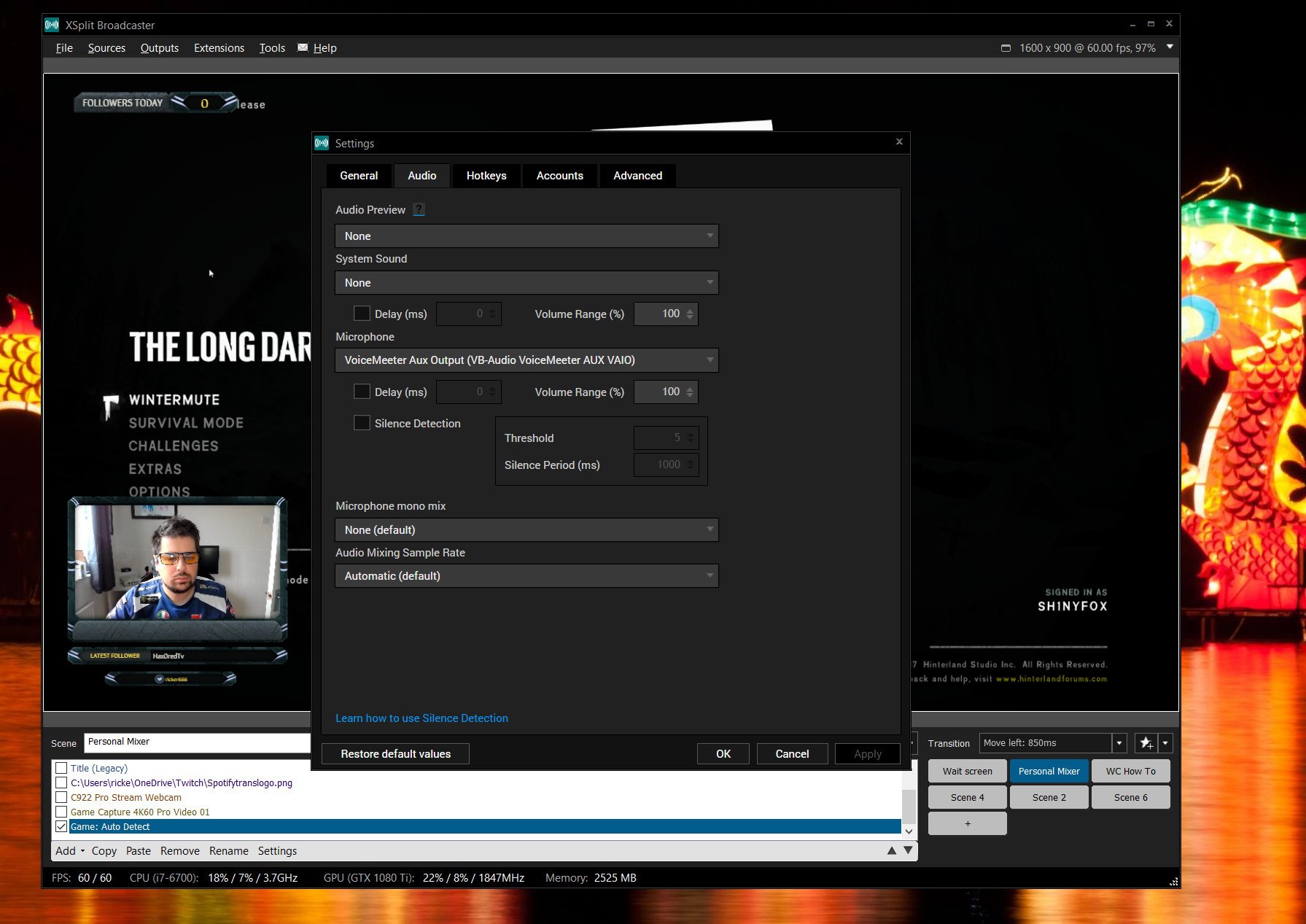
With your video output now set up, it's time to turn to audio. Without great audio, your stream will be a disaster, so it's important to get things right.
If you have multiple audio devices that you want to connect, I recommend using Voicemeeter Banana to manage things, because it's extremely powerful and once you've got over the initial learning curve, really easy to use.
How to use Voicemeeter Banana to manage your PC audio
Whatever you're using, here's how to set your audio up in XSplit.
- Click on tools in the menu bar.
- Click settings.
- Select the audio tab.
Here you'll set your default audio inputs and outputs, whether you're wanting to preview the output sound anywhere and where your system sound is coming from. If you're using a program like Voicemeeter you'll turn everything off and set your microphone to the Voicemeeter output. If you're just plugging your devices into your PC and letting XSplit handle them, this is where you assign them.
There are sliders in the main window to change your system volume and microphone volume, too, without having to go into settings.
How to add capture cards and webcams to XSplit
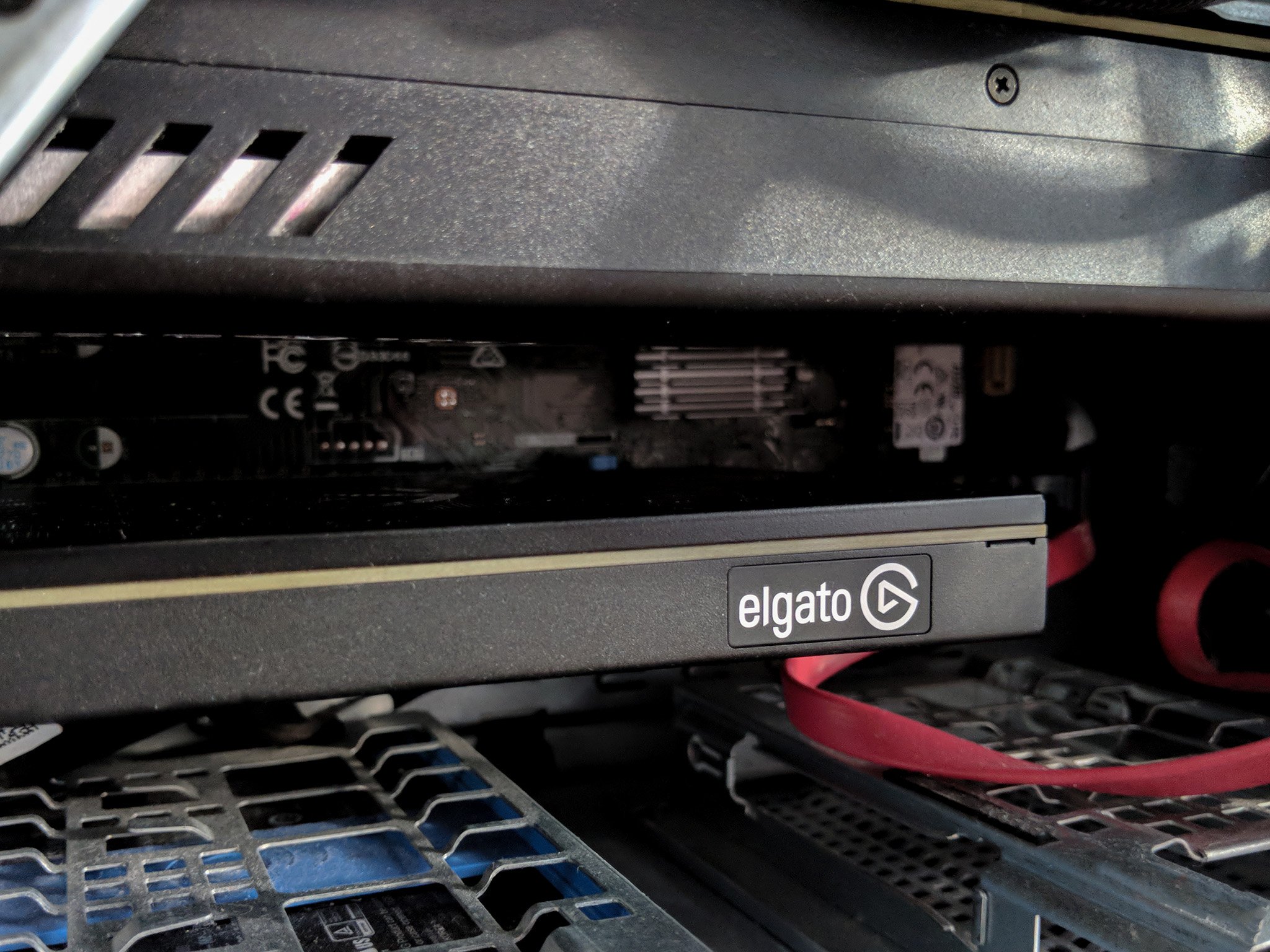
If you're streaming console games then you'll need to add your capture card as a source in XSplit. Whether you're streaming console or PC, you'll probably also want to add a webcam so your viewers can see your beautiful face while you play.
The good news is that both devices are added to XSplit in the same way. Here's how.
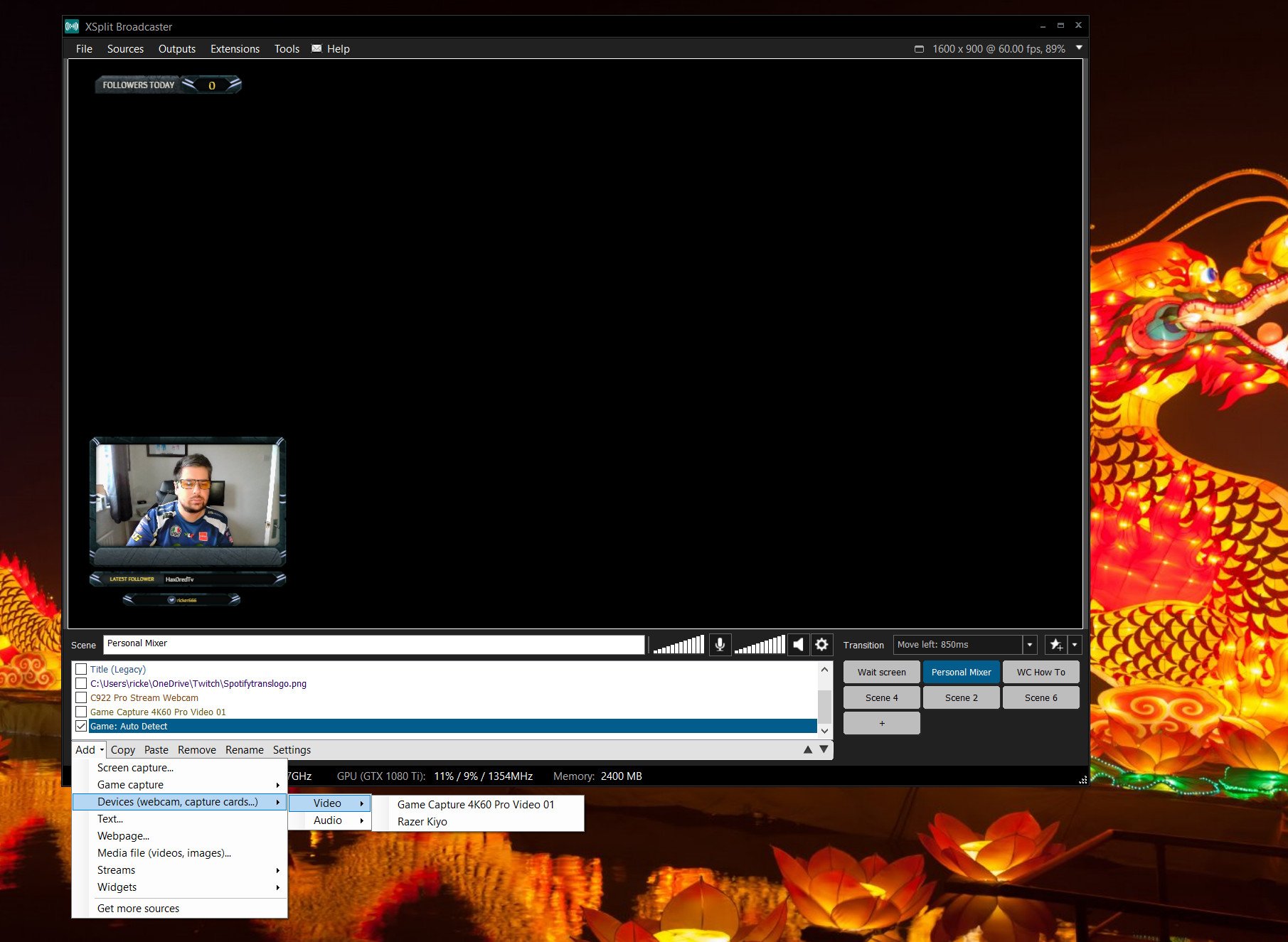
- In the sources box, click add.
- Select devices.
- Then select video.
- Click on your capture card or webcam.
Now a window will be added for your video capture device that you can move around and resize as you see fit.
How to add PC game capture to XSplit
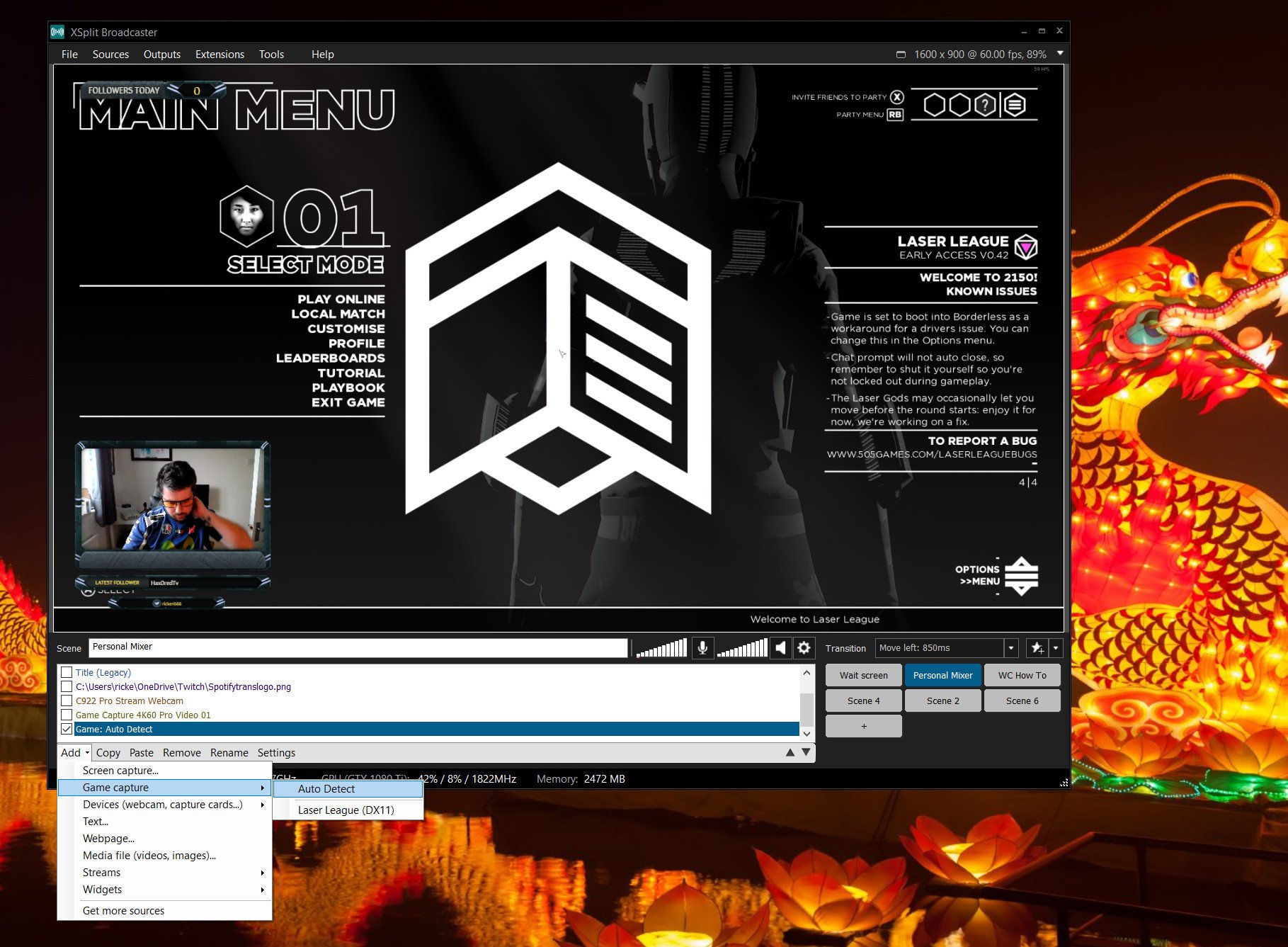
If you're going to be streaming PC games, then XSplit can automatically detect these and import them for use. It works too for DX12 games from the Microsoft Store.
Set it up similarly to other sources.
- In the sources box, click add.
- Select game capture.
- Click auto detect.
You'll now have a single source added that will detect any game you're playing automatically and capture it into XSplit. Alternatively, when you're playing a game you can follow the same steps and just add that one game individually.
XSplit will recognize Microsoft Store apps and games the same and has a habit of pulling these in when you're actually wanting something else. So if you play one game on stream a lot, it might be a better setup to just add that as an XSplit source instead.
How to add a stream overlay to XSplit
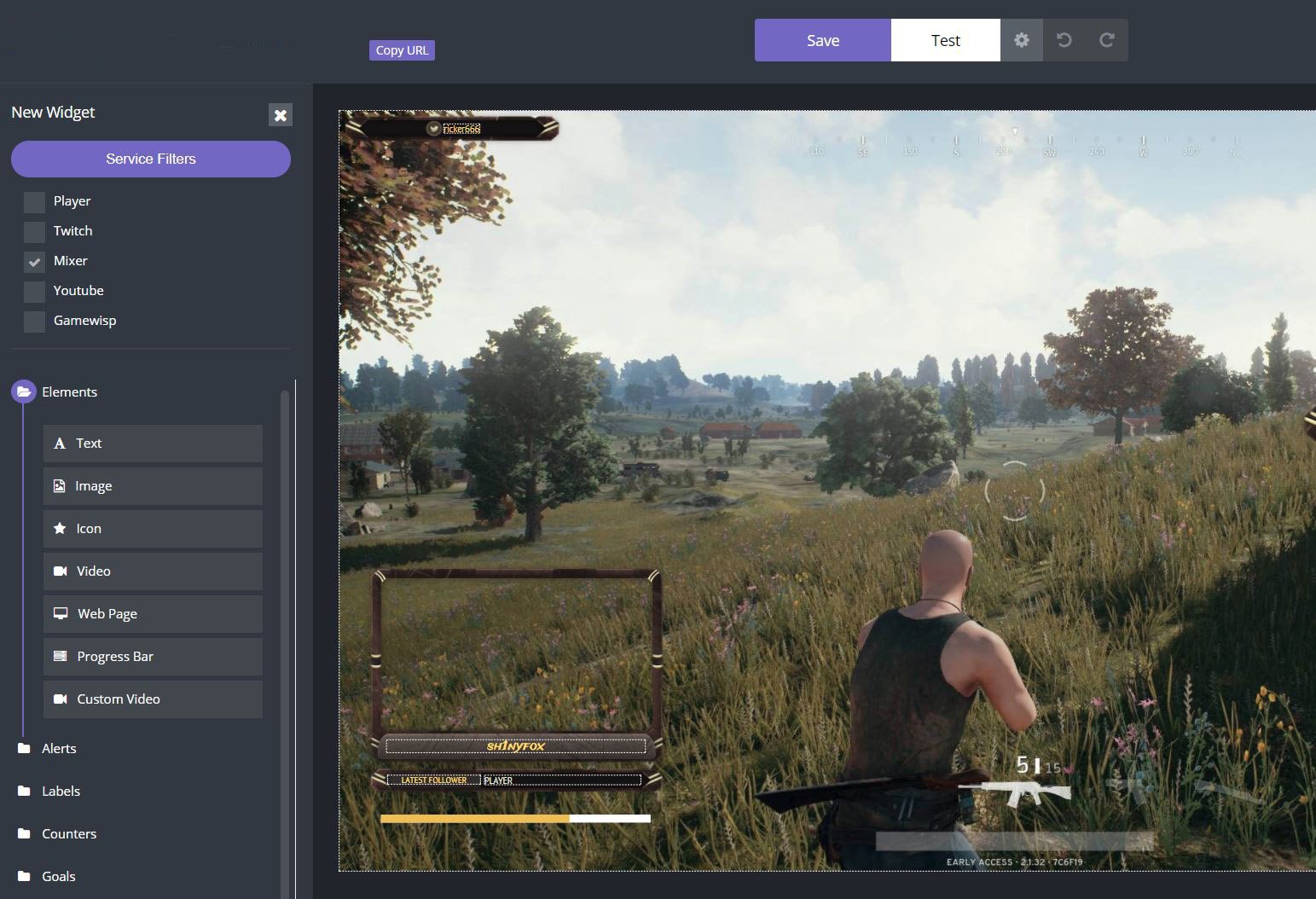
One last thing you might want to add right from the start is an overlay to your stream. I've previously written about great services like Player.me and StreamJar which help you create professional looking overlays with minimal effort on your part.
Besides making your stream look more professional, overlays can add important alerts such as new followers and subscribers, social media links, goals and much more. Whichever service you use to create one, adding to XSplit is the same every time. You'll get a unique URL for your overlay, copy this and follow these steps.
- Click add in the sources box.
- Select webpage.
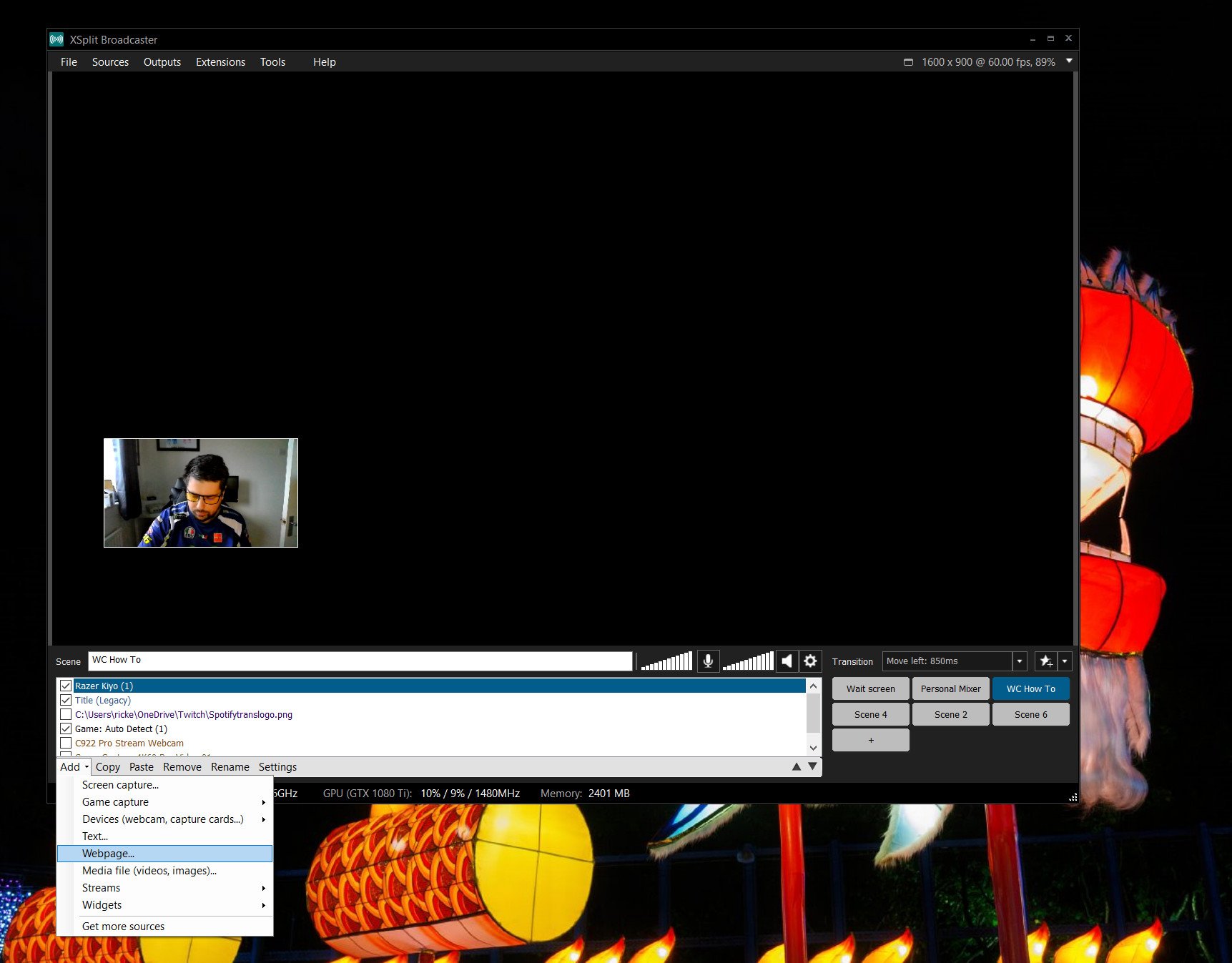
- Paste the URL you copied from your overlay service into the box.
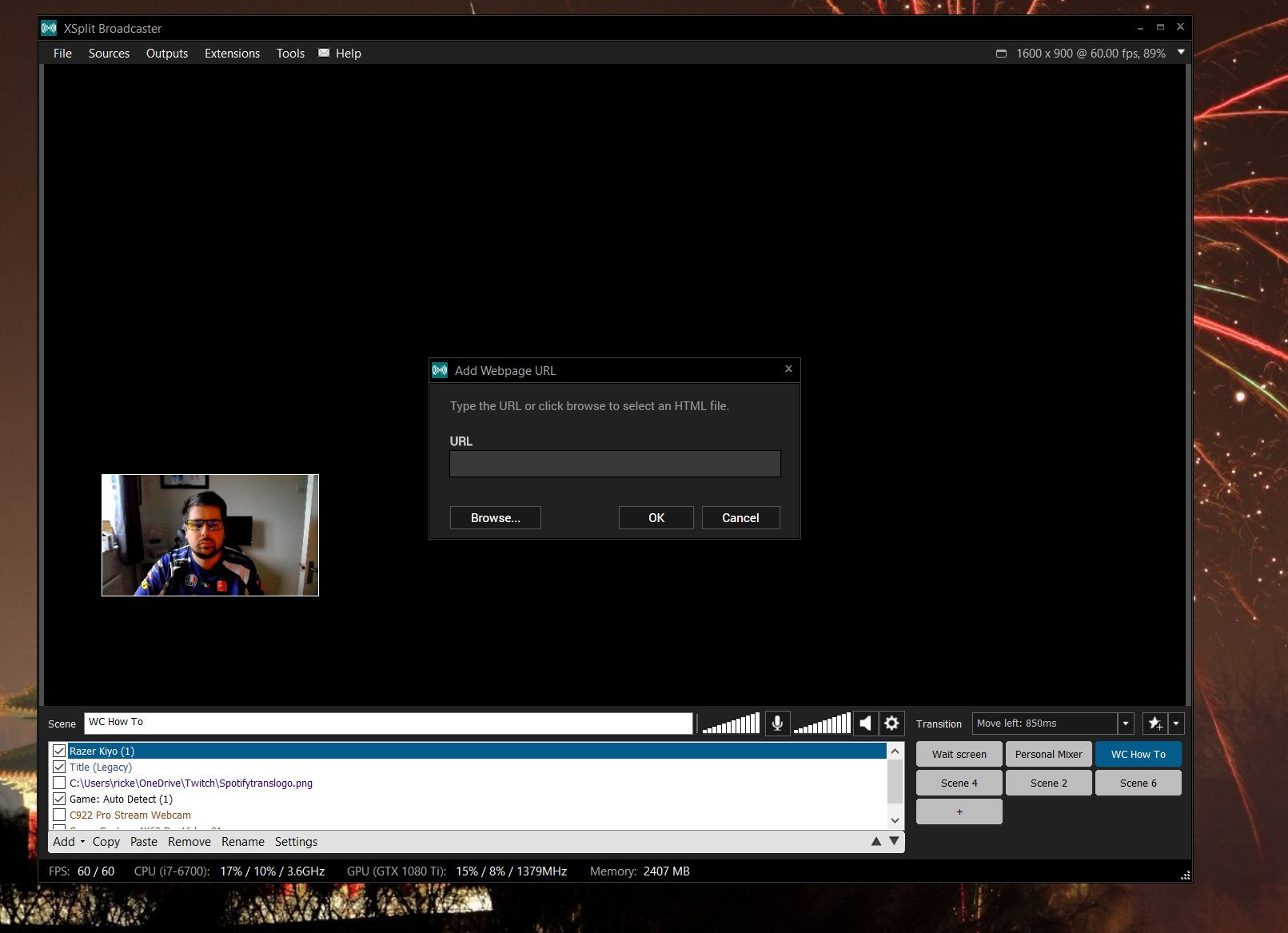
As with any other source, the overlay will now just place itself in your XSplit window for you to locate and resize as necessary.
Your tips
That's how to get yourself set up with XSplit to stream either console or PC games and have a really great looking broadcast.
If you're an old XSplit wizard with some tips and tricks to share be sure to drop them into the comments below.

Richard Devine is a Managing Editor at Windows Central with over a decade of experience. A former Project Manager and long-term tech addict, he joined Mobile Nations in 2011 and has been found on Android Central and iMore as well as Windows Central. Currently, you'll find him steering the site's coverage of all manner of PC hardware and reviews. Find him on Mastodon at mstdn.social/@richdevine
